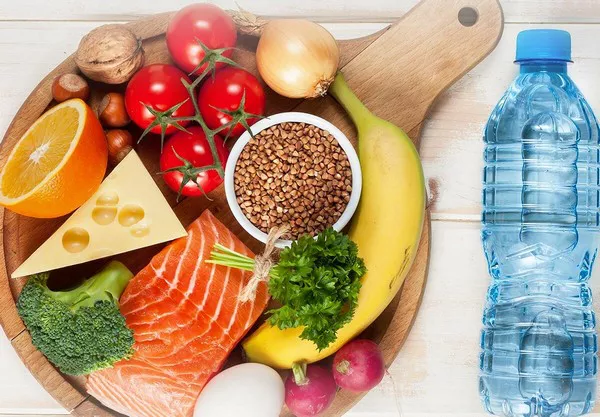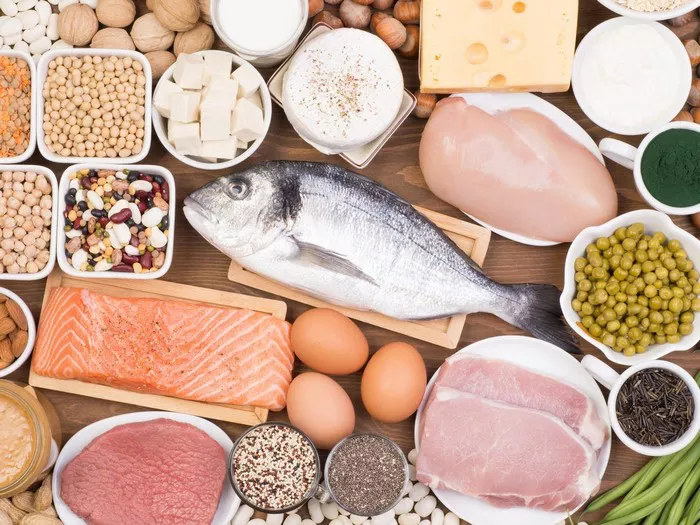Physical fitness enthusiasts and athletes often encounter two terms that play a crucial role in their training routines: strength training and hypertrophy. These concepts are fundamental to developing different aspects of muscle function and physique enhancement. While both are integral to achieving a well-rounded fitness level, they target distinct objectives. This article delves into the nuances of strength training and hypertrophy, exploring their definitions, mechanisms, training methodologies, and how they relate to one another.
[inline_related_posts title=”SEE ALSO” title_align=”left” style=”list” number=”2″ align=”none” ids=”1093,659″ by=”categories” orderby=”rand” order=”DESC” hide_thumb=”no” thumb_right=”no” views=”no” date=”yes” grid_columns=”1″ post_type=”” tax=””]
Defining Strength Training and Hypertrophy
1. Strength Training
At its core, strength training is a type of exercise aimed at enhancing an individual’s ability to generate force against resistance. The primary goal of strength training is to increase an individual’s maximal strength, which refers to the maximum amount of force a muscle or muscle group can generate in a single effort. This type of training focuses on improving neural adaptations and enhancing the recruitment of motor units, enabling muscles to exert greater force efficiently.
2. Hypertrophy
On the other hand, hypertrophy refers to the increase in muscle size due to the enlargement of individual muscle fibers. This process involves the synthesis of new contractile proteins within the muscle cells, resulting in a visible growth in muscle mass. Hypertrophy training is particularly popular among bodybuilders and those seeking aesthetic gains, as it leads to a more pronounced muscular appearance.
Mechanisms of Muscle Adaptation in Strength Training and Hypertrophy
1. Strength Training Mechanisms
The adaptations that occur with strength training are primarily neural in nature. During strength training, the nervous system becomes more efficient at recruiting motor units, which are comprised of a motor neuron and the muscle fibers it innervates. As a result, the body can produce more force by synchronizing the firing of motor units. Additionally, strength training leads to improved intermuscular coordination, allowing multiple muscle groups to work synergistically during complex movements.
2. Hypertrophy Mechanisms
The primary driver of hypertrophy is mechanical tension placed on muscle fibers. This tension occurs when muscles are subjected to progressively heavier loads over time. The mechanical tension stimulates the release of growth factors and hormones that promote protein synthesis within the muscle cells. This, in turn, leads to the enlargement of muscle fibers and an overall increase in muscle size.
Training Methodologies of Strength Training and Hypertrophy
1. Strength Training Methods
To optimize strength gains, training programs often involve lifting heavy weights for fewer repetitions (typically in the range of 1 to 6 repetitions per set). The focus is on lifting close to maximal loads, with longer rest intervals between sets to allow for adequate recovery. Compound movements, such as squats, deadlifts, and bench presses, are commonly incorporated into strength training routines due to their ability to engage multiple muscle groups simultaneously.
2. Hypertrophy Training Methods
Hypertrophy training places a greater emphasis on moderate to high repetition ranges (usually around 6 to 12 repetitions per set). This range is optimal for inducing metabolic stress and cellular fatigue, both of which contribute to muscle growth. Shorter rest periods between sets are often employed to maintain an elevated level of muscle tension. Isolation exercises, such as bicep curls and leg extensions, are frequently integrated into hypertrophy-focused workouts to target specific muscle groups.
Simultaneous Focus on Strength Training and Hypertrophy: Myth or Reality?
Can one effectively pursue both strength and hypertrophy simultaneously, or is it more beneficial to target one goal at a time? This dilemma has sparked debates within the fitness community, leading to varying opinions. To unravel the truth behind this matter, let’s explore the possibilities and considerations surrounding the simultaneous pursuit of both objectives.
1. The Overlapping Zone
Contrary to the belief that strength and hypertrophy are mutually exclusive, research suggests that there is an overlapping zone where both objectives can be pursued simultaneously. This is particularly true for novice and intermediate lifters, as their bodies exhibit a higher degree of adaptability and responsiveness to training stimuli.
2. Mechanisms of Synergy
Several factors contribute to the potential synergy between strength and hypertrophy training:
Neural Adaptations: As an individual becomes stronger, their neural efficiency improves, leading to more effective motor unit recruitment. This increased neural drive can enhance muscle fiber activation during hypertrophy-focused training, promoting growth.
Load Progression: Gradually increasing weights during strength training can induce mechanical tension required for hypertrophy. Heavier weights in strength-focused exercises can lead to muscle damage, a key stimulus for muscle growth.
Metabolic Stress: Hypertrophy-focused training can generate metabolic stress, which stimulates the release of growth factors. These factors can benefit strength gains by aiding in muscle repair and adaptation.
3. Advanced Training and Individualization
As athletes progress into advanced training stages, the dichotomy between strength and hypertrophy becomes more pronounced. Elite athletes often prioritize one goal for a given training cycle, focusing on optimizing that specific adaptation. This approach is rooted in the concept of specialization, allowing athletes to achieve peak performance within a limited time frame.
Relationship Between Strength Training & Hypertrophy
While strength training and hypertrophy have distinct objectives, they are not mutually exclusive. In fact, there is a significant overlap between the two. As an individual becomes stronger, they are likely to experience some degree of muscle growth, and vice versa. This is due to the fact that increased muscle size can contribute to enhanced force production, and improved strength can allow individuals to lift heavier weights, leading to muscle growth.
Fitness experts often recommend periodizing training routines, wherein different phases of training emphasize either strength or hypertrophy. For example, an athlete might focus on building maximal strength during one phase, followed by a phase targeting muscle growth. This approach allows for well-rounded development and prevents plateaus that can occur when following a single training style for an extended period.
Strength Training vs. Hypertrophy: Which Is More Beneficial for Fat Loss
In the pursuit of fat loss, the choice between strength training and hypertrophy training can be pivotal. Both approaches have distinct benefits that can contribute to shedding excess fat, but understanding how each influences the body’s metabolism and composition is essential. Let’s delve into the nuances of both strength and hypertrophy training to uncover which is more beneficial for fat loss.
1. Strength Training for Fat Loss
Metabolic Boost: Strength training involves lifting heavy weights and focusing on improving maximal force production. While strength training might not burn as many calories during the workout compared to high-intensity cardio, it triggers an “afterburn” effect known as excess post-exercise oxygen consumption (EPOC). This means the body continues to burn calories at an elevated rate after the workout to repair and recover muscles.
Preserving Lean Mass: Strength training helps preserve lean muscle mass while in a caloric deficit. As the body adapts to a lower calorie intake, it tends to break down muscle tissue for energy. Engaging in strength training signals to the body that preserving muscle mass is essential, preventing excessive muscle loss during weight loss.
Elevated Resting Metabolic Rate: As lean muscle mass increases, so does the resting metabolic rate (RMR). Muscle tissue is metabolically active, requiring more energy to maintain compared to fat tissue. A higher RMR means more calories burned at rest, contributing to fat loss over the long term.
SEE ALSO: Strength Training: An Effective Path to Fat Burning
2. Hypertrophy Training for Fat Loss
Metabolic Stress: Hypertrophy training, characterized by moderate to high repetitions, induces metabolic stress on muscles. This stress triggers the release of growth factors and hormones that can enhance fat oxidation and stimulate fat loss.
Elevated Caloric Expenditure: While individual hypertrophy workouts might not burn as many calories during the session as cardio-focused activities, the cumulative effect of increased muscle mass due to hypertrophy training leads to a higher overall caloric expenditure. More muscle requires more energy to function, contributing to fat loss.
Enhanced Insulin Sensitivity: Hypertrophy training can improve insulin sensitivity, which is the body’s ability to effectively utilize carbohydrates for energy. Improved insulin sensitivity reduces the likelihood of excess glucose being stored as fat, aiding in fat loss.
3. Synergy Between Strength and Hypertrophy
The line between strength training and hypertrophy training is not rigid, and there’s a considerable overlap. Engaging in both types of training can offer a holistic approach to fat loss.
Muscle Preservation: Combining strength and hypertrophy training can help preserve lean muscle mass while promoting muscle growth. This dual benefit contributes to a favorable body composition during fat loss.
Metabolic Diversity: Incorporating both strength and hypertrophy training introduces metabolic diversity to your workout routine. This can prevent plateaus, enhance overall fitness, and offer a well-rounded approach to fat loss.
Harmonizing Strength Training and Hypertrophy
Designing an effective workout routine that integrates strength and hypertrophy training requires thoughtful planning:
1. Exercise Selection: Incorporate compound movements (squats, deadlifts, bench press) for strength development and isolation exercises (bicep curls, leg extensions) for hypertrophy-focused work.
2. Rep and Set Range: Use a range of repetitions and sets that bridges both training approaches. For example, you can perform heavier sets of 4-6 repetitions for strength, followed by sets of 8-12 repetitions for hypertrophy.
3. Progressive Overload: Gradually increase the weights you lift over time to ensure continuous muscle growth and strength gains.
4. Rest Intervals: Longer rest intervals (2-3 minutes) between sets of heavy lifts for strength, and shorter rest intervals (30-60 seconds) for hypertrophy-focused exercises.
5. Periodization: Incorporate phases where you emphasize either strength or hypertrophy, ensuring consistent progress and preventing plateaus.
Conclusion
In the realm of fitness, understanding the distinction between strength training and hypertrophy is pivotal for setting clear goals and designing effective training programs. Strength training focuses on improving maximal force production through neural adaptations, while hypertrophy training aims to increase muscle size by inducing mechanical tension and cellular changes. While these two approaches have different primary objectives, they are interconnected and can complement each other in a well-structured training regimen. To achieve the best results, individuals often incorporate periodization and appropriate nutritional strategies into their training plans. By harnessing the power of both strength training and hypertrophy, individuals can optimize their physical performance and achieve their desired fitness outcomes.
[inline_related_posts title=”Related Topics” title_align=”left” style=”list” number=”3″ align=”none” ids=”1397,1254,1192″ by=”categories” orderby=”rand” order=”DESC” hide_thumb=”no” thumb_right=”no” views=”no” date=”yes” grid_columns=”1″ post_type=”” tax=””]
































